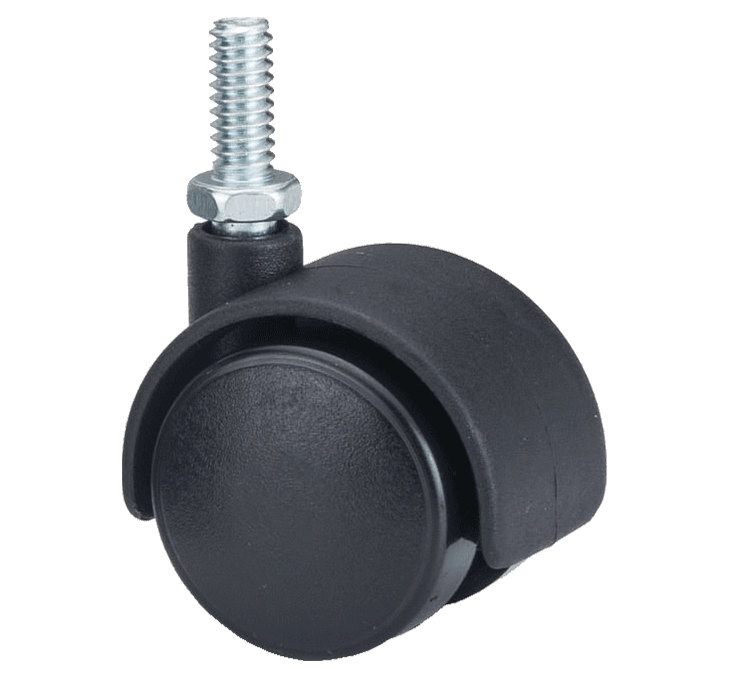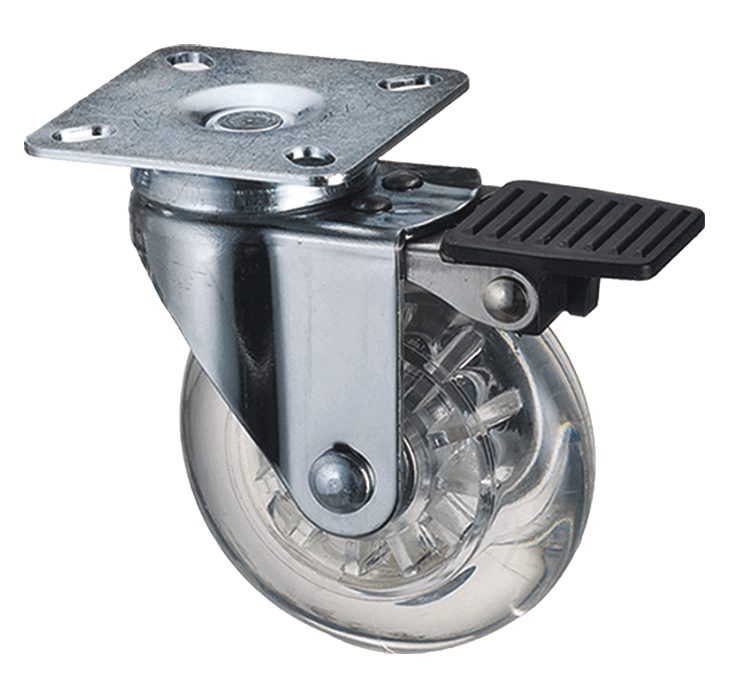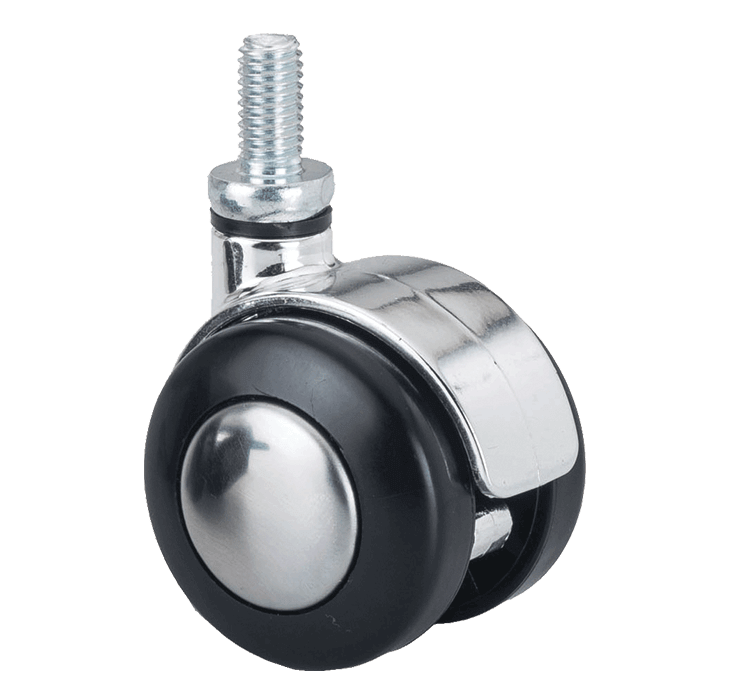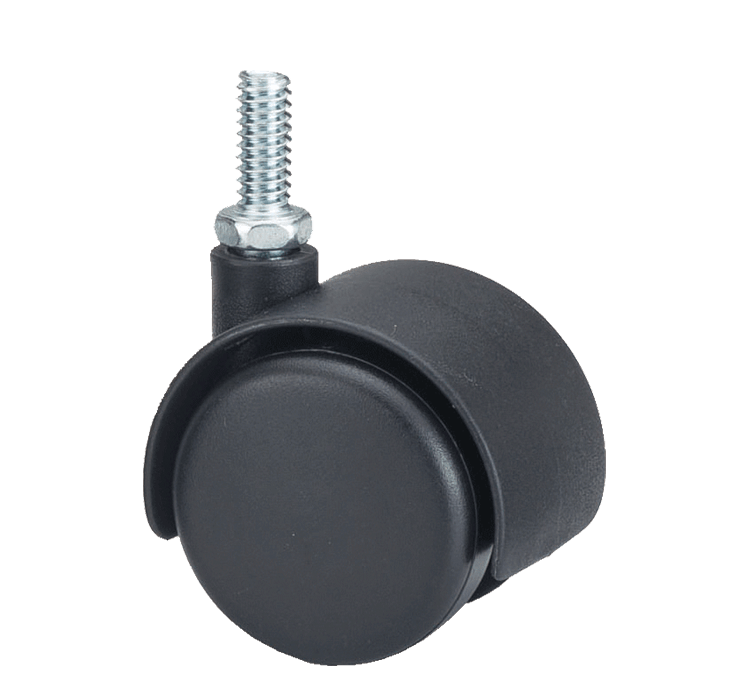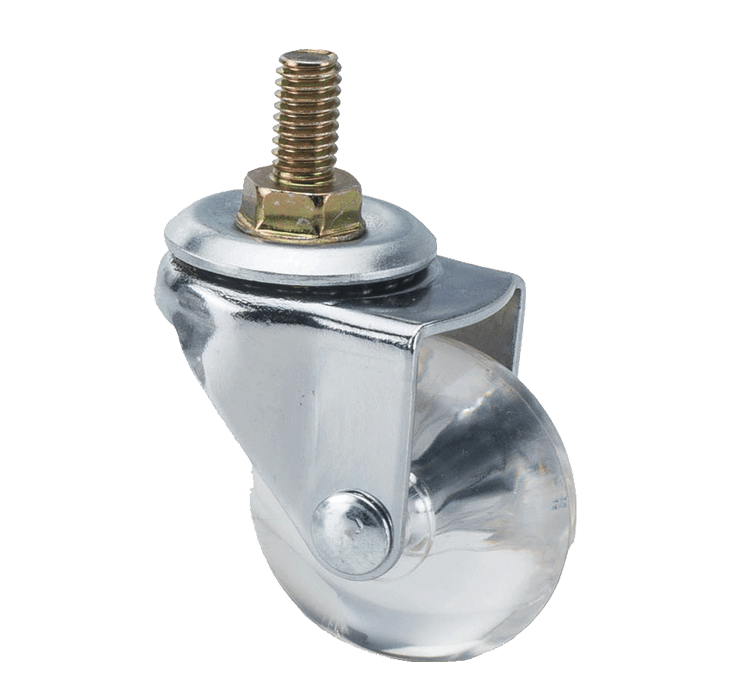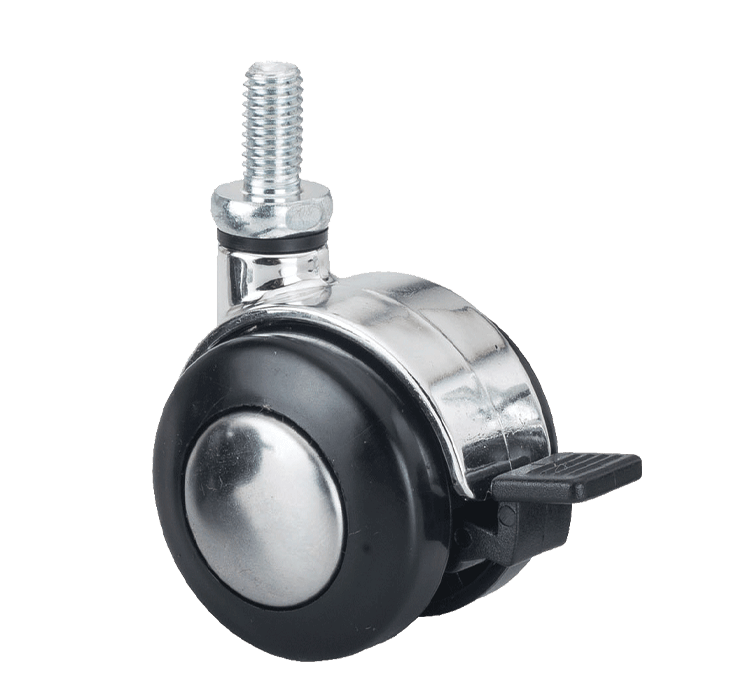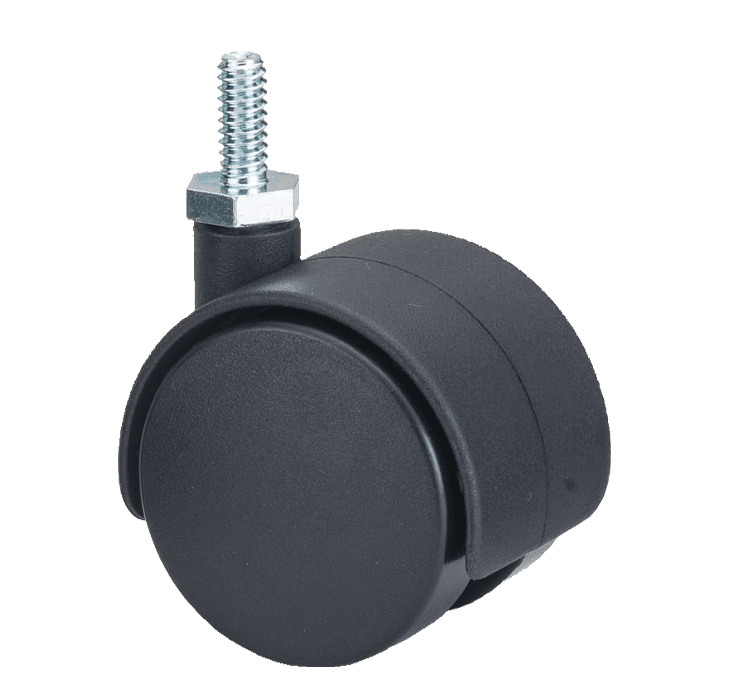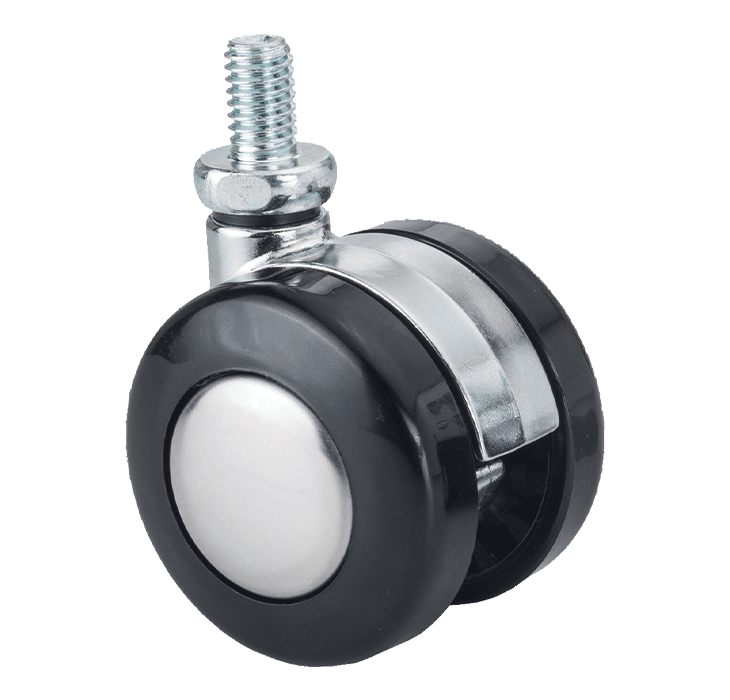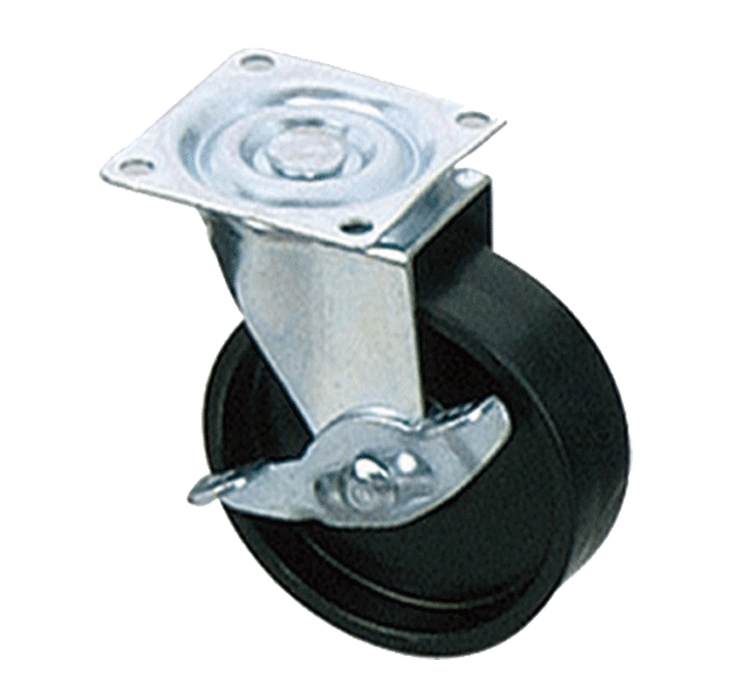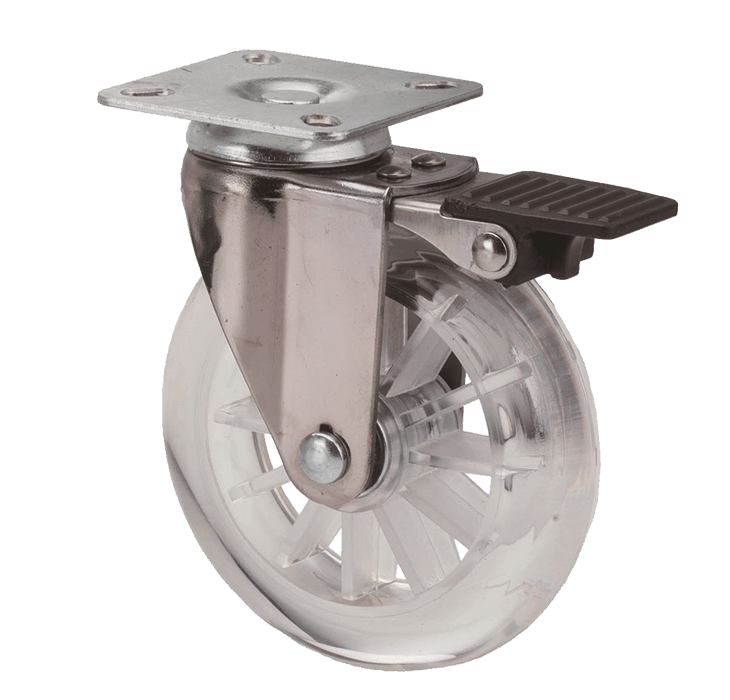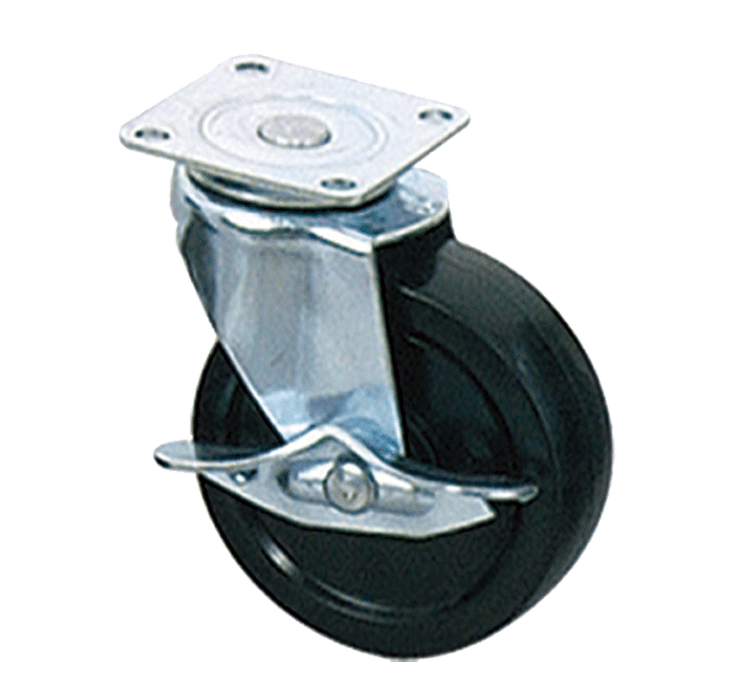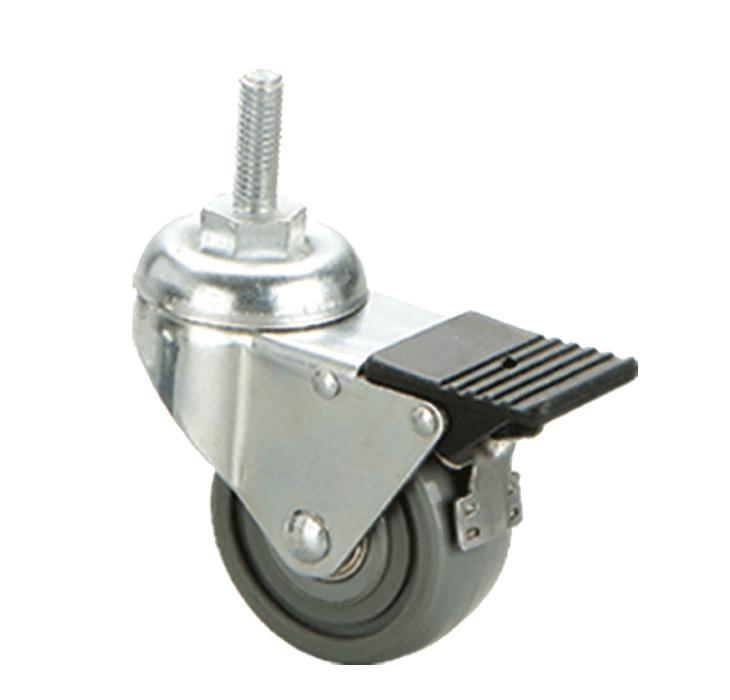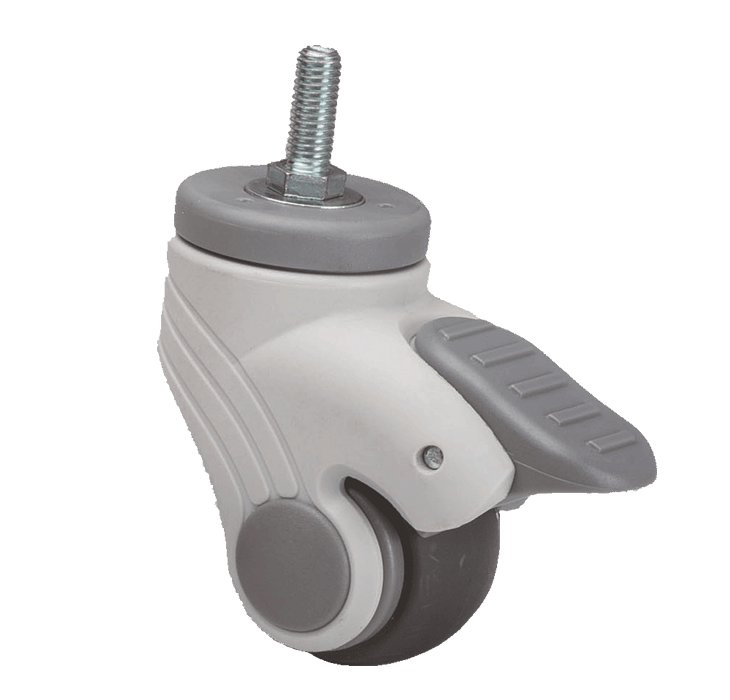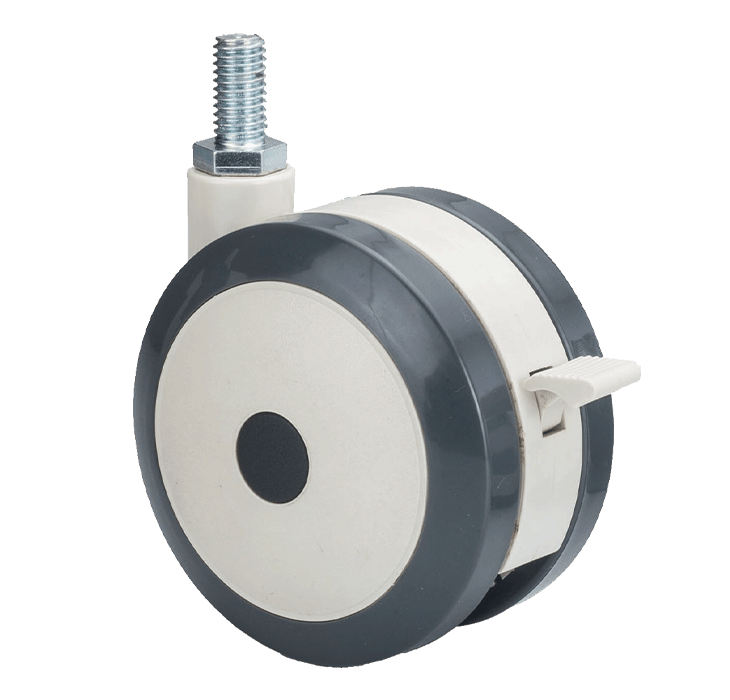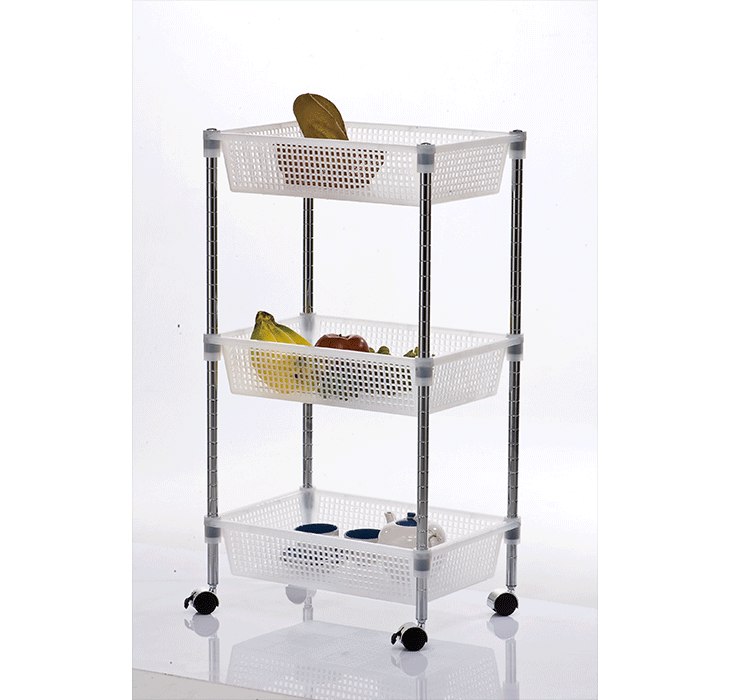Common Problem
How to Choose the Right Caster
Lei Ming casters are easy to work with and are a low-cost solution to adding mobility to your furniture, equipment, appliances, and other items. While there is no simple formula or rule to follow in selecting the proper caster for every situation, let us offer these six suggestions to help you choose the right caster for your application.
- Load Weight
The heavier the load, the larger the wheel required for the caster. The weight of the load also influences the mobility of the wheel so the caster construction also needs to be taken into consideration.
The weight distribution and stability of the furniture should also be considered. If the weight will be shifting back and forth, this will cause extra strain on the caster and needs to be taken into allowed for. When estimating the load, you should always leave some room for error.
- Floor Conditions
Make sure the wheel size selected is large enough to pass over any cracks, tracks, moldings, and other obstructions in the floor surface. For the best floor protection on linoleum and tile, use polyurethane or rubber wheels.
- Rolling Resistance
A general rule of thumb is, the larger the wheel, the lower the rolling resistance. You may want to get by with a smaller caster but if in the end you have a hard time moving an object, it probably won’t be worth it. You’ll also find that caster wheels with good quality bearings offer lower resistance. Some furniture casters are designed especially for surfaces like concrete or carpet, so check the specifications closely.
- Noise Levels
If noise is a consideration, you will notice that nylon and cast-iron casters tend to be noisy, especially on harder surfaces. For lower noise levels, choose polyurethane (PU) or rubber wheel casters. PVC wheels are also a good choice. Although PVC is not quite as durable as PU, it is economical, does not damage floors, and is fairly quiet while rolling.
- Measure Twice
Measure the area where the caster will be attached to make sure the caster will fit properly. Also consider where the screws will be placed. Don’t buy an oversized caster if there is not be enough mounting space to comfortably screw on or install the caster.
- Price Often Makes a Difference
If you are considering small furniture casters designed to carry lighter loads like couches, tables, and trolleys, there will be a big difference in price when it comes to quality. Cheaper models will often be made of some plastic construction that is not likely to hold up over time. These casters will have a lightweight feel and you will find them difficult to roll or move. Investing a little extra for casters of a higher quality can give you years of reliable use.
Taking the above factors into consideration, you will find that Lei Ming has a quality caster at a price best for you.
Guide to Choosing Casters
- Guidelines for Selecting Casters Based on Floor Conditions:
Choosing the right material will extend the life of the caster and avoid leaving marks on the floor. One simple rule to follow is, if your floor is hard, choose a soft caster. However, if you will be using the casters on a soft surface such as a floor cover or carpet, choosing a hard caster will prevent marking.
- Unique Materials for Special Applications:
Lei Ming offers casters with various special characteristics, such as anti-static, special colors, etc. These are mainly made of nylon and PP.
In general, it is best to use hard wheel materials on soft floor surfaces and soft wheel materials on hard floor. Choosing the right type of wheel material the first time can save you a lot of problems.
- Soft Caster Wheel Materials:
Casters made of soft materials provide a better grip, making them more resistant to slipping. They are generally better for hard surfaces, such as concrete and tile floors. Some of the casters made with softer wheel materials include:
- Black Rubber Castors
Black rubber casters give a good grip and good floor protection with low noise. They are ideal for hard surfaces as they offer quiet movement and will not damage floors. You will also enjoy the cushioned ride they give for the load you are moving. They are also resistant to most chemicals and oils. The one drawback of black rubber casters is that they have a lower load capacity than some of the other harder materials used.
- Polyurethane Castors
Polyurethane is a very adaptable material that gives good grip, reasonable floor protection, and an appealing appearance. PU can be used for heavier loads and will give a long service life with low noise, making it ideal for hard surfaces.
- Polypropylene Castors
Polypropylene is a low cost, economical material highly suitable for both hard surfaces, and soft surfaces such as carpet.
- Nylon Castors
Nylon is a heavy-duty material that can provide long life and ease of movement on harder surfaces while still being suitable for soft surfaces such as carpet.
- Thermoplastic Rubber
This material is often a better choice for caster wheels than soft rubber as it wears better while still providing non-marking floor protection. The soft tread is durable and resistant to oils and chemicals so is ideal for applications where the caster will need to be washed.
- Black Rubber Castors
- Hard Caster Wheel Materials
For extreme durability, some of the harder caster wheel materials available include:
- Polyolefin
Lightweight polyolefin tread has high impact strength and is not prone to marking.
Polyolefin is one of the most economical materials used for casters and is highly resistant to degradation from frequent washing, cleaning solutions, grease, oil, and other chemicals.
- Cast Iron
Cast iron is one of the most durable materials used for casters as it does not chip or wear easily. Cast iron can also give an elegant appearance to antique and rustic furniture. In heavy duty industrial environments, it can handle heavy loads, but cast iron has low resistance to water, so should only be used where surfaces are kept dry.
- Polyolefin
When calculating the maximum weight that will be placed on each castor, consideration should be taken for unequal load distribution etc. It is always better to use a higher-capacity castor than you require. Remember that larger diameter wheels will be easier to maneuverer and will last longer. If you have any questions about selecting casters, we are always happy to provide assistance.

